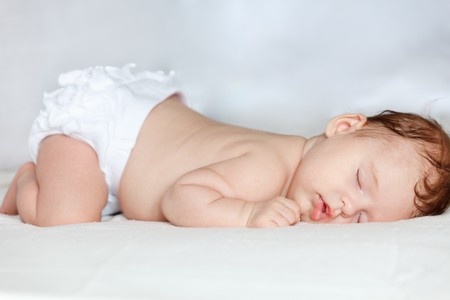


When you embrace the parenthood for the very first time, it is natural to feel concerned about everything your baby does. You want your baby to be safe and that is why you have to follow the recommendations made by the experts. Many experts say that it is better to keep your baby from sleeping on their stomach. Why? Back sleeping has its benefits and it also lowers risks of SIDS. Let's find out more about it.

When babies sleep on their stomach, they get less air to breathe in and this puts them at an increased risk of Sudden Infant Death Syndrome (SIDS). In 2015, more than 1,600 babies died because of SIDS. Therefore, it is important to ensure that you place your baby on their back when you put your baby down to sleep.
The problem is that some babies do not like to sleep on their back. In this situation, a better alternative would be a side-sleeping position. However, you should bear in mind that experts are of the view that a side-sleeping position does not reduce the risk of SIDS, especially if your baby is under 6 months of age, as 90% of SIDS cases occur during 2-4 months.
Why can't babies sleep on their stomach? You already know the answer, but you should also know about the sleeping guideline for babies to make it safer for them.
It is a good idea to select a firm sleeping surface for your baby. Ensure that it does not have any stuffed animals, pillows, and soft bedding. A firm, flat mattress is usually perfect. It is better to avoid soft mattresses with memory foam because it increases the risk of suffocation. Stick to the pad that comes with a play yard if your baby likes to sleep in it. Similarly, it is better to avoid crib bumpers, as they do not prevent injuries but increase the risk of strangulation, suffocation, and entrapment. When swaddling your baby, avoid covering them with a blanket because it can obstruct their breathing. It is better to dress them in warmer clothing than wrapping them in a blanket.
A good idea to keep your baby safe at night is to sleep in the same room. However, you should not share the same bed with your baby. They can sleep in the bassinet, crib, or play yard and you can keep it close to your bed. Stick to this setting for at least the first six months or even for the first year. Sharing the bed with your baby increases the risk of accidental suffocation, entrapment, strangulation, and SIDS. Some people believe that in-bed sleepers are safe, but there is no research confirming the safety of these devices. Moreover, it is better to avoid installing any portable rails to keep your baby from rolling off the bed because they also increase the risk of entrapment and strangulation.
When you are tired and feeding your baby, it is natural to nod off on a sofa with your baby in your arms. This can be quite unsafe for your baby. Some parents may even put their baby down on a couch or even in an armchair for a few minutes to take a quick nap, but these cushioned environments increase the risk of suffocation and SIDS. Ensure that you do not sleep while holding your baby in your arms. Be sure to put them in their crib before you want to take some rest.
Many products are now available that claim to lower the risk of SIDS. However, not all those products are effective or even safe. Some of the products that you may want to avoid are bolsters, wedges, and other positioners. These products are designed to keep your baby on their back while sleeping, but there is no evidence that they actually work. In fact, some of these products are made of soft materials that increase the risk of suffocation deaths. Similarly, there is no evidence that some crib mattresses help reduce the risk of SIDS.
Overheating is another SID risk factor, so it is important to take every step to prevent it. It is important to be careful when dressing your baby for sleep. Do not dress them in more than one layer of clothes. Ensure that the material or fabric of the clothes is suitable for that environment. You should also keep a close eye on your baby and watch for any signs of overheating, such as damp hair, sweating, or a chest that feels warm to touch. It is better to avoid covering your baby's head or face with hoods or hats.